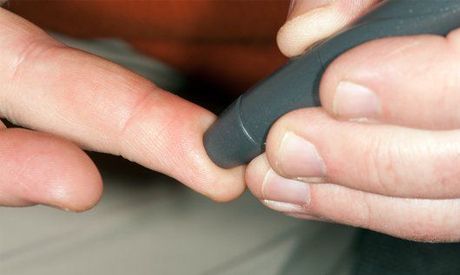Medical expert of the article
New publications
Diabetes mellitus increases the risk of sudden death 6-fold
Last reviewed: 01.07.2025

All iLive content is medically reviewed or fact checked to ensure as much factual accuracy as possible.
We have strict sourcing guidelines and only link to reputable media sites, academic research institutions and, whenever possible, medically peer reviewed studies. Note that the numbers in parentheses ([1], [2], etc.) are clickable links to these studies.
If you feel that any of our content is inaccurate, out-of-date, or otherwise questionable, please select it and press Ctrl + Enter.
"It is possible to control the course of diabetes mellitus provided that the blood glucose levels are constantly maintained at levels close to normal. Diabetes is not a death sentence and not necessarily a fatal disease or one that leads to complications. With adequate and timely treatment, with an adequate attitude of the patient to his disease, all complications of diabetes are completely preventable," said Boris Mankovsky, professor, doctor of medical sciences, head of the diabetology department of the National Academy of Postgraduate Education named after P.L. Shupik, corresponding member of the NAMS of Ukraine.
Boris Mankovsky drew attention to such main obstacles in achieving effective control of diabetes as untimely diagnosis, prescription of inadequate therapy, fear of hypoglycemia and weight gain, low patient adherence to treatment, lack of self-control skills and fear of insulin therapy. "Diabetes mellitus has many faces and really requires great attention not only from endocrinologists but also from doctors of all specialties, society and the government. In the 21st century, diabetes mellitus will play the same role as the plague, cholera and other especially dangerous infections played in the Middle Ages," Mankovsky emphasized.
Almost everyone knows about the problems caused by high blood glucose levels, but not much is known about the troubles associated with lowering sugar levels below normal – hypoglycemia. Thus, the main manifestations of hypoglycemia, such as irritability, anxiety, dizziness, weakness, drowsiness and constant feeling of hunger are often not identified with a decrease in glucose not only by patients but also by attending physicians. In addition, according to information from Boris Mankovsky, most often doctors do not achieve a good result of sugar-lowering therapy because they are afraid of the development of hypoglycemia in the patient. "But in fact, in the entire process of treating diabetes and in the prevention of hypoglycemic conditions and their consequences, in particular, the patient should take an active part. For his part, the doctor must provide the patient with all the necessary information and teach him the basic skills in the fight against hypoglycemia. First of all, the patient should be taught to recognize a hypoglycemic condition at an early stage and an algorithm of actions," the doctor noted.

For reference:
According to the International Diabetes Federation, in 2011 the number of people living with diabetes in the world reached 366 million, and by 2030, according to experts' forecasts, this figure will exceed 550 million, if no active measures are taken to prevent further growth in the prevalence of diabetes. That is, every tenth adult inhabitant of the planet will have diabetes. Every year the number of people with diabetes increases by 10 million, that is, every ten seconds three new cases of the disease appear. Half of people with diabetes do not know that they have the disease and are exposed to a very high risk of complications and premature death.
Currently, according to the Ministry of Health, 1 million 300 patients with diabetes are officially registered in Ukraine. But, in fact, according to experts, this figure is much higher and reaches 3 million patients with diabetes. At the same time, the number of diagnosed cases increases annually by 5%.
 [ 1 ], [ 2 ], [ 3 ], [ 4 ], [ 5 ], [ 6 ], [ 7 ], [ 8 ], [ 9 ], [ 10 ], [ 11 ], [ 12 ], [ 13 ]
[ 1 ], [ 2 ], [ 3 ], [ 4 ], [ 5 ], [ 6 ], [ 7 ], [ 8 ], [ 9 ], [ 10 ], [ 11 ], [ 12 ], [ 13 ]

